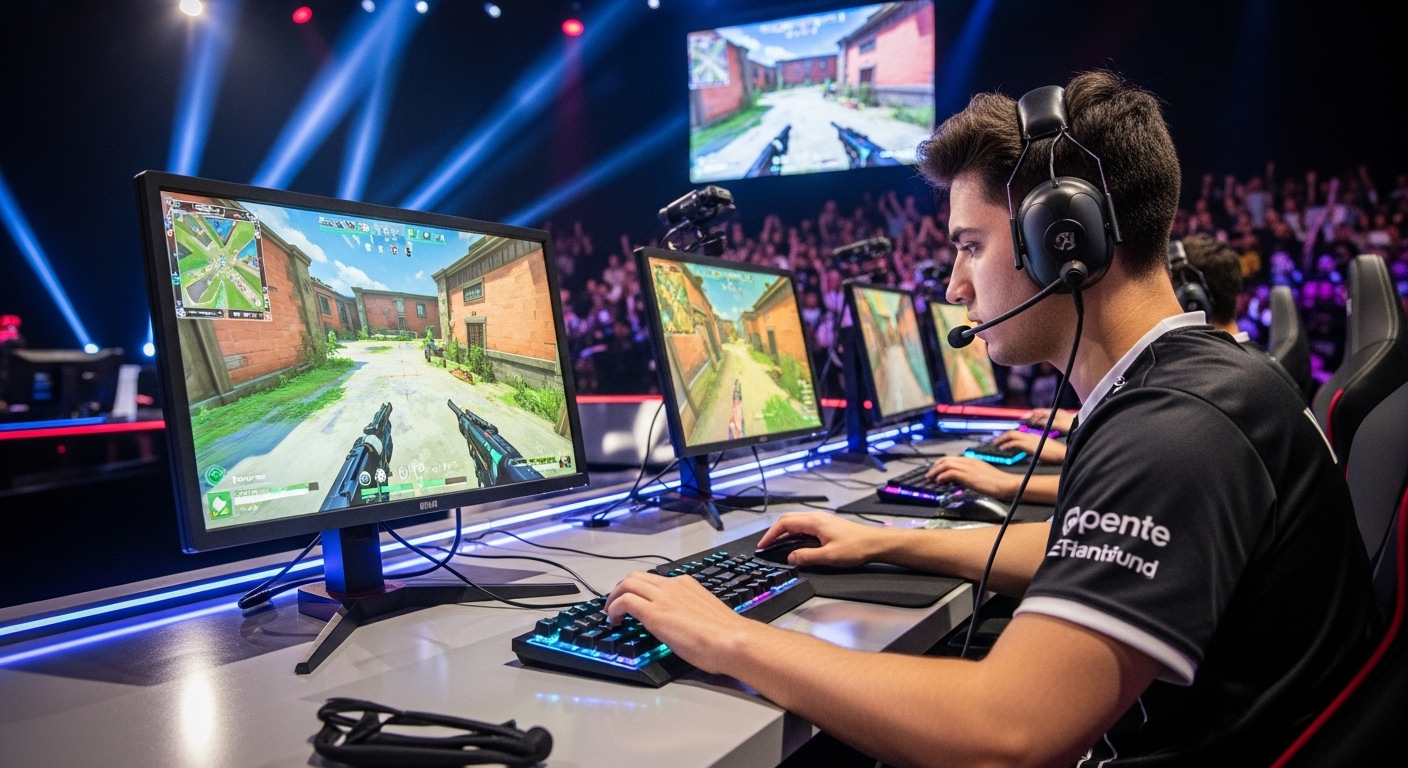Gaming has come a long way since its humble beginnings, evolving through decades of technological advancements and cultural shifts. From the flashing screens of arcade machines to the immersive worlds of virtual reality, the journey of gaming reflects human creativity, innovation, and our desire for entertainment. This blog post explores the fascinating evolution of gaming, highlighting key milestones and the exciting future that awaits players everywhere.
The Birth of Gaming: Arcade Era
The story of modern gaming begins in the 1970s and 1980s with arcade machines. These coin-operated devices were often found in public places like malls, restaurants, and amusement parks. Classics such as Pong, Pac-Man, and Space Invaders captured the imagination of millions.
What Made Arcade Gaming Special?
Arcade games introduced fast-paced, addictive gameplay that was easy to pick up but challenging to master. The social aspect of arcades, where players competed for high scores, created a lively community atmosphere. Players would gather around machines, cheering each other on and sharing tips.
Limitations and Impact
While limited by hardware constraints, arcade games pushed designers to be creative within tight technical boundaries. The focus was on fun and replayability rather than narrative depth or graphics. This era laid the foundation for future innovations and established gaming as a mainstream pastime.
The Rise of Home Consoles
With the arrival of home consoles in the late 1970s and early 1980s, gaming shifted from public spaces into the living room. The Atari 2600 became one of the first widely successful systems, bringing simple games to people’s homes.
Expanding Possibilities at Home
Home consoles allowed players to enjoy gaming at their own pace and convenience. Developers began creating more complex titles with richer stories and varied gameplay. The introduction of cartridges meant games could be easily swapped and collected.
Challenges and Growth
The early 1980s also saw a market crash due to poor quality control and oversaturation, but the industry quickly recovered with the launch of the Nintendo Entertainment System. Nintendo revolutionized home gaming with iconic franchises like Super Mario Bros and The Legend of Zelda, which set standards for game design.
The Age of PCs and Online Gaming
Alongside consoles, personal computers grew in popularity as gaming platforms. PCs offered greater processing power and flexibility, enabling developers to create expansive worlds and sophisticated simulations.
The Emergence of Online Multiplayer
The 1990s and early 2000s introduced online multiplayer gaming, forever changing how people played. Titles like Quake and StarCraft allowed players from around the world to compete or cooperate in real time. This connectedness laid the groundwork for esports and social gaming.
Diverse Game Genres Flourish
PC gaming nurtured the rise of genres such as real-time strategy, massively multiplayer online role-playing games (MMORPGs), and first-person shooters. The open nature of PCs also encouraged modding communities, allowing players to customize and enhance games.
The Mobile Revolution
The late 2000s and 2010s saw mobile devices become powerful gaming platforms. Smartphones and tablets brought gaming to a whole new audience, breaking down barriers of access.
Casual Gaming Boom
Mobile games like Angry Birds, Candy Crush, and Clash of Clans attracted casual players who might never have owned a console or PC. These games emphasized short, engaging sessions, often with social and competitive elements.
Impact on the Industry
Mobile gaming introduced new monetization models, including free-to-play with in-app purchases, reshaping how games were funded and designed. It also spurred innovation in game controls and accessibility.
The Dawn of Virtual Reality and Immersive Experiences
Virtual reality (VR) represents one of the most exciting frontiers in gaming today. By placing players inside fully realized digital worlds, VR delivers an unprecedented level of immersion.
Early VR Attempts
Though VR concepts date back decades, recent advancements in hardware and software have made it viable for mainstream gaming. Devices like the Oculus Rift, HTC Vive, and PlayStation VR offer high-quality, interactive experiences.
How VR Changes Gaming
VR transforms traditional gameplay by engaging multiple senses and requiring physical movement. Players can explore environments, manipulate objects, and interact naturally within virtual spaces. This has applications beyond entertainment, including education, training, and therapy.
The Future of Gaming: What’s Next?
Gaming continues to evolve rapidly, with exciting possibilities on the horizon.
Augmented Reality and Mixed Reality
AR blends digital elements with the real world, as seen in games like Pokémon GO. This technology offers new ways to interact with games in everyday environments.
Cloud Gaming and Accessibility
Cloud gaming services promise to remove hardware barriers by streaming games directly to devices. This could make high-end gaming accessible to more people.
Artificial Intelligence and Procedural Generation
AI is enhancing game design through smarter NPCs and adaptive difficulty. Procedural generation creates vast, unique worlds dynamically, ensuring no two playthroughs are the same.
Conclusion: Celebrating the Journey of Gaming
From the flashing lights of arcade cabinets to the immersive realms of virtual reality, gaming has continually reinvented itself to captivate players worldwide. Each era brought new technology, new challenges, and new ways to experience stories and competition. As we look ahead, the future of gaming promises even more innovation and excitement.
Whether you are a nostalgic fan of classic arcade games or an early adopter of VR, understanding the evolution of gaming deepens your appreciation for this vibrant form of entertainment. Gaming is not just about playing; it’s a cultural phenomenon that connects people, sparks creativity, and pushes the boundaries of technology.
The journey from arcade to VR is a testament to how far we have come—and how thrilling the road ahead remains.



